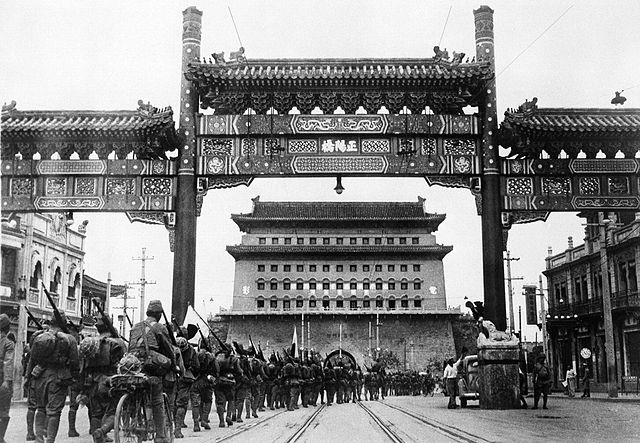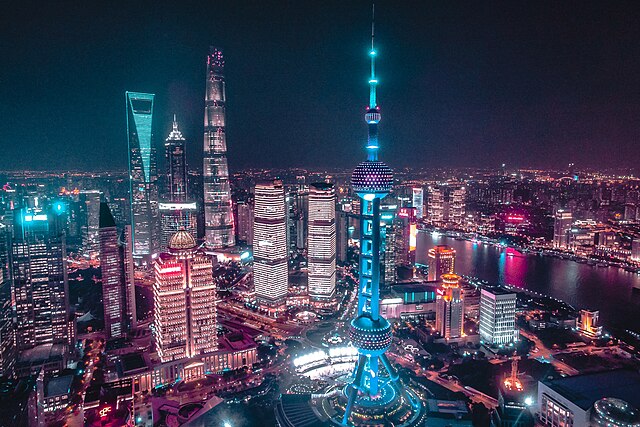China–Japan relations or Sino-Japanese relations are the bilateral relations between China and Japan. The countries are geographically separated by the East China Sea. Japan has been strongly influenced throughout its history by China, especially by the East and Southeast through the gradual process of Sinicization with its language, architecture, culture, cuisine, religion, philosophy, and law. When Japan was forced to open trade relations with the West after the Perry Expedition in the mid-19th century, Japan plunged itself through an active process of Westernization during the Meiji Restoration in 1868 and began viewing China under the Qing dynasty as an antiquated civilization unable to defend itself against foreign forces—in part due to the First and Second Opium Wars along with the Eight-Nation Alliance's involvement in suppressing the Boxer Rebellion. Japan eventually took advantage of such weaknesses by invading China, including the First Sino-Japanese War and the Second Sino-Japanese War.

Japanese Prime Minister Fumio Kishida (left) and China's paramount leader Xi Jinping (right) meet in San Francisco, United States in November 2023.
The Japanese army launches a general offensive on Tianjin castle during the Boxer Rebellion, 1900.
Japanese march into Zhengyangmen of Beijing after capturing the city in July 1937
The Hiroshima-Sichuan Sino-Japanese Friendship Convention Center (Japanese: 広島・四川中日友好会館, Simplified Chinese: 广岛・四川中日友好会馆) in Wuhou District, Chengdu
China has an upper middle income, developing, mixed, socialist market economy incorporating industrial policies and strategic five-year plans. It is the world's second largest economy by nominal GDP, behind the United States, and the world's largest economy since 2016 when measured by purchasing power parity (PPP). China accounted for 19% of the global economy in 2022 in PPP terms, and around 18% in nominal terms in 2022. The economy consists of public sector enterprises, state-owned enterprises (SOEs) and mixed-ownership enterprises, as well as a large domestic private sector and openness to foreign businesses in their system. Post-1978 economic reforms China's average GDP growth had been over 10% annually for over three decades, and in some years, growth exceeded 14% annually.
Shanghai, the financial center of China
GDP per capita in China from 1000 to 2018
Distribution of GDP in mainland China
Worlds regions by total wealth (in trillions USD), 2018








